Harmonised WHS Act & Regulations Audit
An audit against the harmonised Work Health and Safety (WHS) Act and Regulations. This audit aims to identify legal non-compliance and protect your business from prosecution by the WHS regulator. It covers a variety of areas, including:
- Plant and Equipment
- Manual Handling
- Hazardous Chemicals
Management System Audits (ISO 45001, 9001 and 14001)
Achieving ISO accreditation from an accredited certification is a vital ambition for corporations looking to demonstrate their commitment to HSEQ performance. Management system audits include an assessment of:
- Leadership and Worker Participation
- Planning and Support
- Operation and Improvement

Read More About Workplace Health and Safety Compliance Auditing In Australia
Workplace Safety Audits: A Guide For Businesses
Introduction
Workplace safety audits are an important part of maintaining a safe and healthy workplace. By conducting a workplace safety audit, businesses can identify potential hazards in the workplace and take steps to correct them.
Workplace safety audits can be conducted by businesses themselves or by third-party organizations. When deciding whether to conduct a workplace safety audit, businesses should consider the following factors: the size of the workplace, the type of business activities conducted at the workplace, the number of employees, and the frequency of accidents and injuries.
The results of a workplace safety audit can help businesses identify areas where they need to make improvements in their safety program. Businesses should make sure to keep track of their workplace safety audit results so they can see if their safety efforts are making a difference.
Workplace Safety Audits
Workplace safety audits are an important part of ensuring that businesses are providing a safe and healthy work environment for their employees. Safety audits can help identify potential hazards in the workplace and provide recommendations for corrective action.
There are many reasons why businesses should conduct safety audits, including complying with regulatory requirements, reducing insurance costs, and protecting employees from injuries. Safety audits can also be used to improve communication and cooperation between employees and management on safety issues.
When conducting a workplace safety audit, businesses should consider the following factors: the type of business, the size of the workplace, the number of employees, the work environment, and the company’s safety history. Some businesses may also want to consult with their insurance provider or a safety consultant to get expert advice on how to conduct a safety audit.
The frequency of workplace safety audits will vary depending on the size and complexity of the business, but most businesses should conduct audits on at least an annual basis. Small businesses with fewer than 10 employees may be able to get by conducting audits every two years.
Who should conduct workplace safety audits? The person conducting the audit should have knowledge of Occupational Safety and Health Administration (OSHA) regulations and be familiar with the types of hazards present in the workplace. It is also important that the person conducting the audit be impartial and objective in order to get accurate results.
What should be included in a workplace safety audit? A comprehensive workplace safety audit should include a review of the company’s safety policies and procedures, as well as an evaluation of the work environment for potential hazards. The audit should also include interviews with employees to get their feedback on the company’s safety procedures and what could be improved.
Businesses can improve their workplace safety audit results by taking corrective action on identified hazards, maintaining accurate records of accidents and injuries, and continually reviewing and updating their safety policies and procedures. By taking these steps, businesses can create a safer work environment for their employees and help reduce the chances of accidents and injuries occurring in the workplace.
Why conduct a workplace safety audit?
Conducting a workplace safety audit is an important way for businesses to ensure that their workplace is safe for employees and compliant with relevant safety regulations. A safety audit can help identify hazards in the workplace and provide recommendations for corrective action. Additionally, safety audits can help businesses track their progress in maintaining a safe workplace over time.
When to conduct a workplace safety audit?
It is always important to make sure that your workplace is safe for both employees and customers. Depending on the type of business, there are different times when a workplace safety audit should be conducted. Here are some examples:
- If you have new employees, it is a good idea to conduct a workplace safety audit to ensure that they are aware of all the safety procedures in place.
- If there have been any changes made to the workplace, such as new equipment or changes to the layout, a workplace safety audit should be conducted to make sure that everything is safe and up to code.
- If there have been any accidents or near-misses, a workplace safety audit should be conducted to identify any potential hazards and make sure that they are corrected.
- If it has been a while since the last workplace safety audit was conducted, it is always a good idea to conduct another one just to make sure that everything is still safe and up to code.
- If you are starting a new business and need WHS Compliance Auditing performed in your place of work.
How to conduct a workplace safety audit?
Conducting a workplace safety audit is an important step in ensuring the safety of your employees. By identifying potential hazards and addressing them, you can create a safer work environment for everyone.
There are a few key steps to conducting a successful workplace safety audit:
- Identify the hazards: The first step is to identify any potential hazards in your workplace. This can be done by observing the work area and talking to employees about their concerns. Once you have identified the hazards, you can begin to address them.
- Evaluate the risks: Once you have identified the hazards, you need to evaluate the risks associated with each one. This will help you determine which hazards are more likely to cause injuries or illnesses and need to be addressed first.
- Develop a plan: Once you have evaluated the risks, you need to develop a plan to address them. This plan should include information on how to eliminate or control the hazard, who will be responsible for doing so, and when it will be completed.
- Implement the plan: The final step is to implement the plan. This includes making sure that all employees are aware of the hazards and how to avoid them, as well as putting into place any controls that are needed.
Why are workplace safety audits important?
Workplace safety audits are important for businesses of all sizes. By assessing the safety and health hazards in your workplace, you can identify potential problems and take steps to correct them. Additionally, regular safety audits help ensure that your workplace is in compliance with OSHA standards.
Audits also help you create a culture of safety in your workplace. When employees see that their employer is committed to identifying and mitigating hazards, they are more likely to take an active role in promoting safe work practices.
There are many different types of workplace safety audits, but all share the same goal: to promote safe work practices and prevent injuries, illnesses, and fatalities. Some common types of workplace safety audits include:
- General Safety Audits: These audits assess the overall safety of a workplace. General safety audits typically address topics such as electrical safety, slips/trips/falls, ergonomics, fire safety, and chemical handling.
- Job-Specific Safety Audits: As the name implies, these audits focus on specific job tasks or processes. Job-specific safety audits often address issues such as machine guarding, lockout/Tagout procedures, personal protective equipment (PPE), and confined space entry.
- Hazardous Energy Control (HEC) Audits: HEC audits assess a company’s energy control procedures, including lockout/Tagout procedures. HEC audits are required by OSHA for certain industries, such as healthcare and construction.
Whether you conduct general or job-specific safety audits, the process is typically the same. First, you will need to develop audit criteria based on OSHA standards and other relevant regulations. Next, you will conduct the audit using observational techniques and/or data collection methods. Finally, you will prepare a report detailing your findings and recommendations.
How often should workplace safety audits be conducted?
Most experts recommend that workplace safety audits be conducted on a regular basis, at least once per year. However, the frequency of audits may need to be increased if there are concerns about specific hazards or safety issues within the workplace.
Additionally, businesses should consider conducting an audit anytime there is a change in management or key personnel, as well as whenever there are changes to workplace policies or procedures.
Who should conduct workplace safety audits?
There are a number of different parties who can conduct workplace safety audits, including internal audit teams, external health and safety consultants, and government inspectors. While each option has its own benefits and drawbacks, businesses should carefully consider who will be conducting their audits in order to ensure that they are getting the most comprehensive and accurate results possible.
Internal audit teams are usually composed of employees who have been specifically trained in how to identify safety hazards. Because they are already familiar with the business’s operations, internal audit teams can often provide more detailed and accurate reports. However, they may also be more likely to gloss over potential problems if they feel pressure from management to do so.
External health and safety consultants are usually brought in from outside the company to provide an unbiased assessment of the workplace. While they may not be as familiar with the day-to-day operations of the business, they can often provide a fresh perspective that can help identify potential hazards that have been overlooked by those who are more familiar with the work environment. However, external consultants can be expensive, and their reports may be less detailed than those prepared by internal audit teams.
Government inspectors are typically only called in when there has been a complaint or an accident has occurred. While their reports can be very thorough, they may only focus on the specific problem that led to the complaint or accident, rather than looking at the workplace as a whole.
What should be included in a workplace safety audit?
There are a number of workplace safety audits that businesses can choose to conduct, but there are certain elements that should be included in all audits in order to ensure that they are effective.
First and foremost, audits should identify any potential hazards in the workplace. This includes anything from unsafe equipment to hazardous materials.
Once potential hazards have been identified, businesses should put procedures in place to mitigate these risks. This could involve anything from providing employees with safety training to implementing new safety protocols.
In addition to identifying and mitigating potential risks, workplace safety audits should also assess how effective current safety measures are. This could involve observing employees as they work to see if they are following safety procedures correctly or conducting interviews with employees to gauge their understanding of these procedures.
Finally, audits should also seek to identify any gaps in the current safety net. This could involve assessing whether employees have the necessary Personal Protective Equipment (PPE) or whether there are adequate fire exits in the event of an emergency.
Conducting regular workplace safety audits is crucial for any business that wants to ensure a safe working environment for its employees. By taking the time to identify potential hazards and put procedures in place to mitigate them, businesses can help create a safer environment for everyone involved.
How can businesses improve their workplace safety audit results?
Every business is required to have a workplace safety audit at least once a year. However, not all businesses are created equal when it comes to workplace safety. Some businesses take their workplace safety audits seriously and make an effort to improve their results each year. Other businesses see the audit as a necessary evil and don’t put much thought into it.
There are a number of ways that businesses can improve their workplace safety audit results.
- The first step is to take the audit seriously. Workplace safety should be a top priority for all businesses, and an audit is an important way to ensure that the workplace is safe.
- Second, businesses should focus on improving their communication with employees about workplace safety. Employees should be aware of the dangers in the workplace and know how to protect themselves. This information can be communicated through training sessions, safety meetings, and other means.
- Third, businesses should develop and implement comprehensive safety policies and procedures. These should be designed to reduce the risks in the workplace and make it easier for employees to follow safe work practices.
- Finally, businesses should regularly review their workplace safety audits and use the results to make improvements in their workplace safety programs. By taking these steps, businesses can ensure that they are providing a safe environment for their employees and protecting themselves from potential liability.







